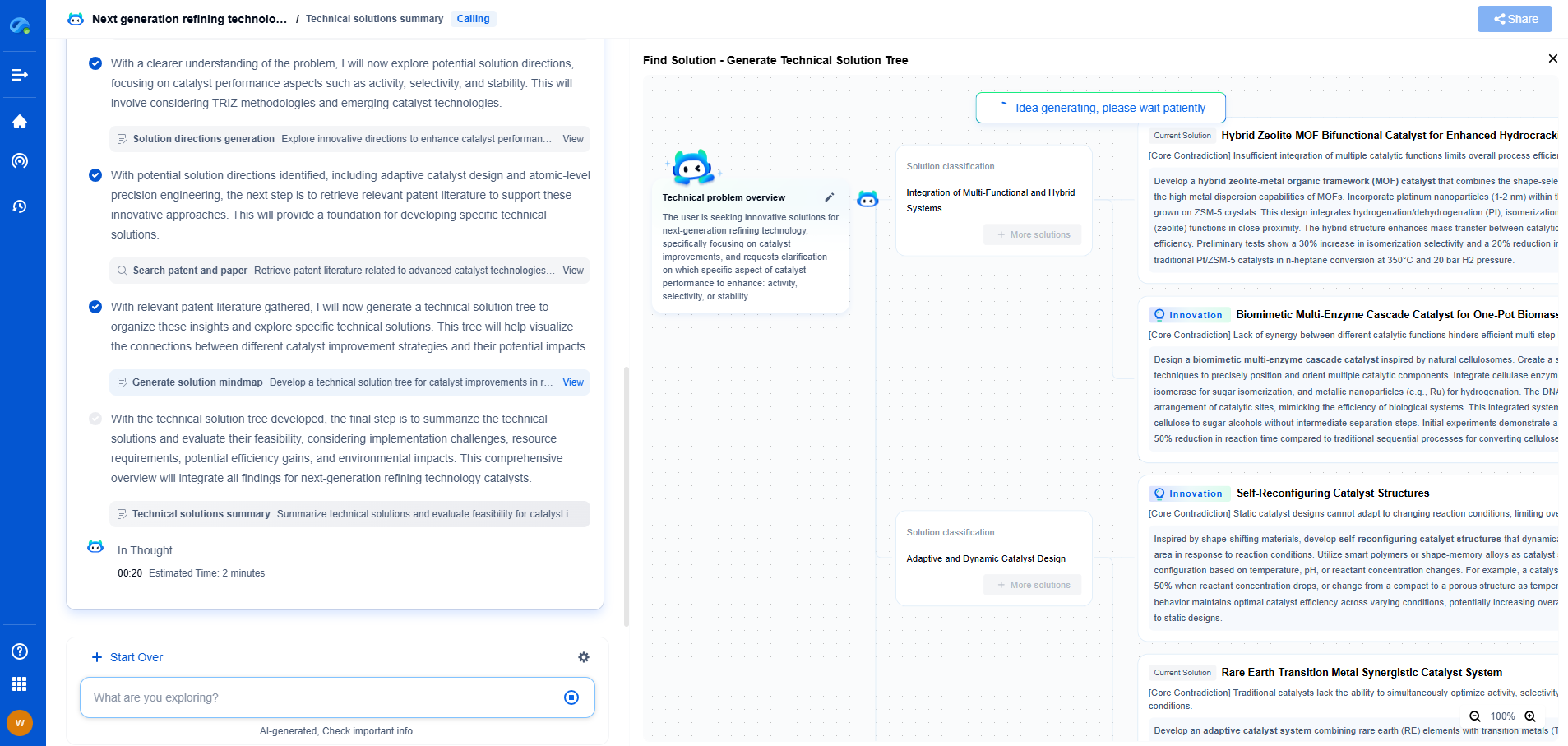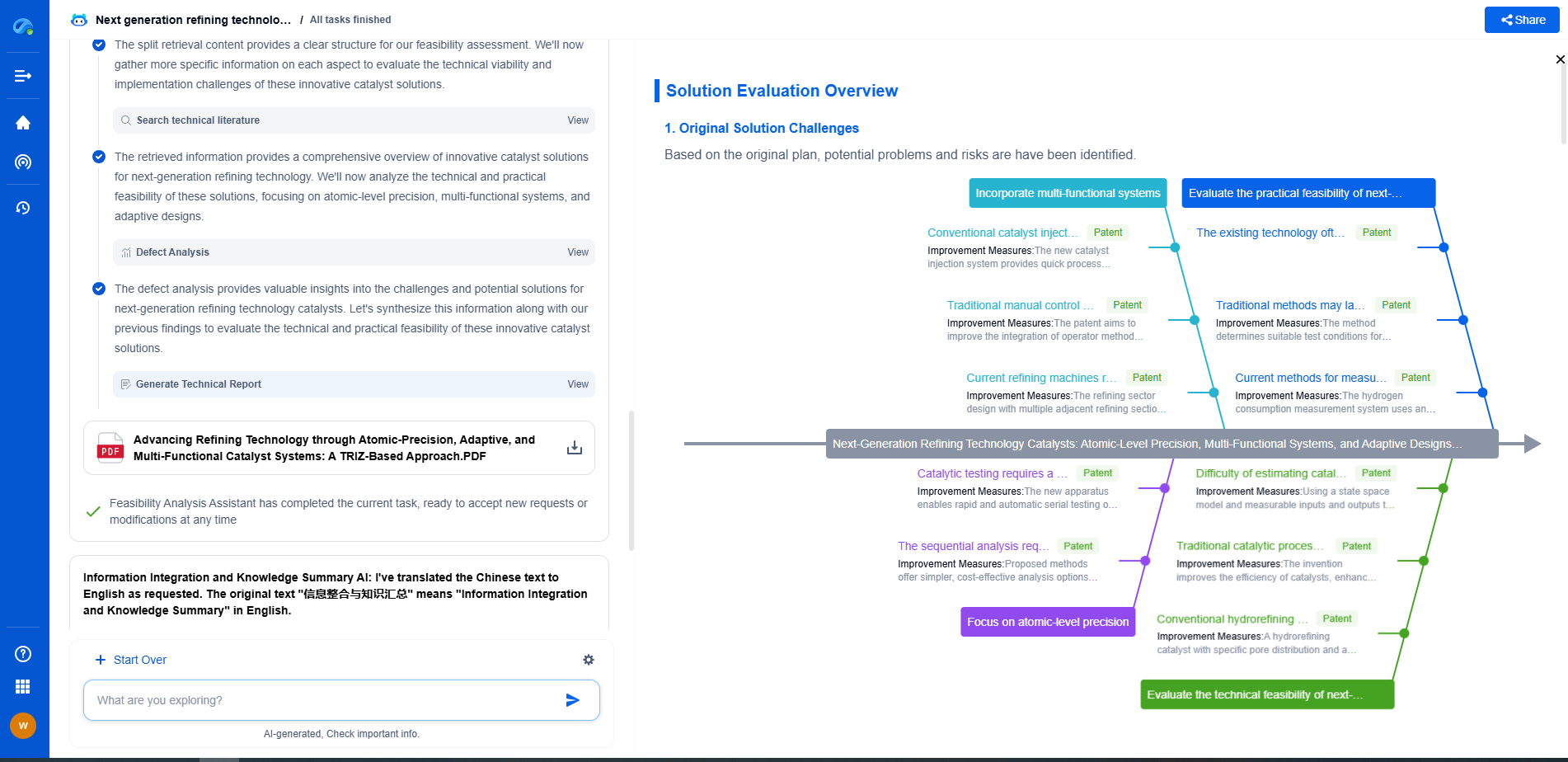Reducing Measurement Latency: Hardware and Software Optimization Strategies
JUL 17, 2025 |
In the fast-paced world of technology, minimizing measurement latency is crucial for enhancing the performance and efficiency of a wide range of applications. Whether it is in telecommunications, scientific research, or industrial automation, reducing the time delay between the initiation of a measurement and the delivery of results can significantly optimize system operations. This blog explores various hardware and software strategies to minimize measurement latency effectively.
Understanding Measurement Latency
Measurement latency refers to the time lag between the initiation of a measurement process and the delivery of the measurement results. High latency can lead to delays, decreased performance, and inefficiencies, particularly in systems that require real-time data processing. Understanding the sources of latency is the first step towards devising strategies to reduce it.
Hardware Optimization Strategies
1. Selecting High-Speed Components
Choosing the right hardware components plays a vital role in reducing measurement latency. Opt for high-speed processors, memory modules, and data acquisition devices. High-performance CPUs and GPUs can handle more data at faster rates, significantly reducing processing time.
2. Utilizing Efficient Data Buses
Efficient data transfer is essential for minimizing latency. High-speed data buses, such as PCIe (Peripheral Component Interconnect Express) and Thunderbolt, facilitate rapid data exchange between components. Ensuring your system supports these standards can reduce bottlenecks in data flow.
3. Implementing Low-Latency Network Solutions
For systems relying on network communication, employing low-latency network solutions is crucial. Consider technologies like Ethernet with Time-Sensitive Networking (TSN) capabilities, which reduce latency by prioritizing time-critical data packets and ensuring deterministic delivery.
4. Optimizing Sensor Placement and Configuration
In measurement systems involving sensors, strategically placing and configuring sensors can reduce latency. Minimize the physical distance between sensors and processing units, and configure sensors to capture data at optimal rates, minimizing the need for extensive post-processing.
Software Optimization Strategies
1. Streamlining Data Processing Algorithms
Efficient algorithms are essential for reducing software-induced latency. Streamline data processing algorithms to eliminate unnecessary steps and reduce computational overhead. Employ parallel processing and multithreading techniques to distribute workload across multiple processors, enhancing processing speed.
2. Utilizing Real-Time Operating Systems
A real-time operating system (RTOS) can significantly reduce latency in critical systems. RTOS prioritize time-sensitive tasks, ensuring that they are executed promptly. By adopting an RTOS, you can achieve more predictable and consistent performance.
3. Implementing Caching Mechanisms
Implement caching mechanisms to store frequently accessed data and reduce retrieval times. By keeping data close to the processing unit, caching minimizes the need for repeated data fetching, thereby reducing latency.
4. Leveraging Cloud and Edge Computing
Cloud and edge computing offer powerful solutions for latency reduction. By processing data closer to the source, edge computing reduces the time required for data transmission to centralized data centers. Meanwhile, cloud computing provides scalable resources for handling high volumes of data efficiently.
Monitoring and Measurement
1. Continuous Latency Monitoring
Implement tools and strategies for continuous latency monitoring. By tracking latency metrics in real-time, you can identify bottlenecks and optimize system performance proactively. Utilize network analyzers, performance monitoring software, and diagnostic tools to gather comprehensive latency data.
2. Conducting Regular System Audits
Regularly auditing your system allows you to identify outdated components, inefficient processes, and potential areas for improvement. By keeping your hardware and software up to date, you can ensure optimal performance and minimize latency.
Conclusion
Reducing measurement latency requires a holistic approach that combines both hardware and software optimization strategies. By selecting high-speed components, implementing efficient data buses, streamlining algorithms, and leveraging modern computing paradigms, you can significantly enhance the performance of your systems. Continuous monitoring and regular audits further ensure that your systems remain optimized and responsive, meeting the demands of today's fast-paced technological landscape.
Whether you’re developing multifunctional DAQ platforms, programmable calibration benches, or integrated sensor measurement suites, the ability to track emerging patents, understand competitor strategies, and uncover untapped technology spaces is critical.
Patsnap Eureka, our intelligent AI assistant built for R&D professionals in high-tech sectors, empowers you with real-time expert-level analysis, technology roadmap exploration, and strategic mapping of core patents—all within a seamless, user-friendly interface.
🧪 Let Eureka be your digital research assistant—streamlining your technical search across disciplines and giving you the clarity to lead confidently. Experience it today.
- R&D
- Intellectual Property
- Life Sciences
- Materials
- Tech Scout
- Unparalleled Data Quality
- Higher Quality Content
- 60% Fewer Hallucinations
Browse by: Latest US Patents, China's latest patents, Technical Efficacy Thesaurus, Application Domain, Technology Topic, Popular Technical Reports.
© 2025 PatSnap. All rights reserved.Legal|Privacy policy|Modern Slavery Act Transparency Statement|Sitemap|About US| Contact US: help@patsnap.com

